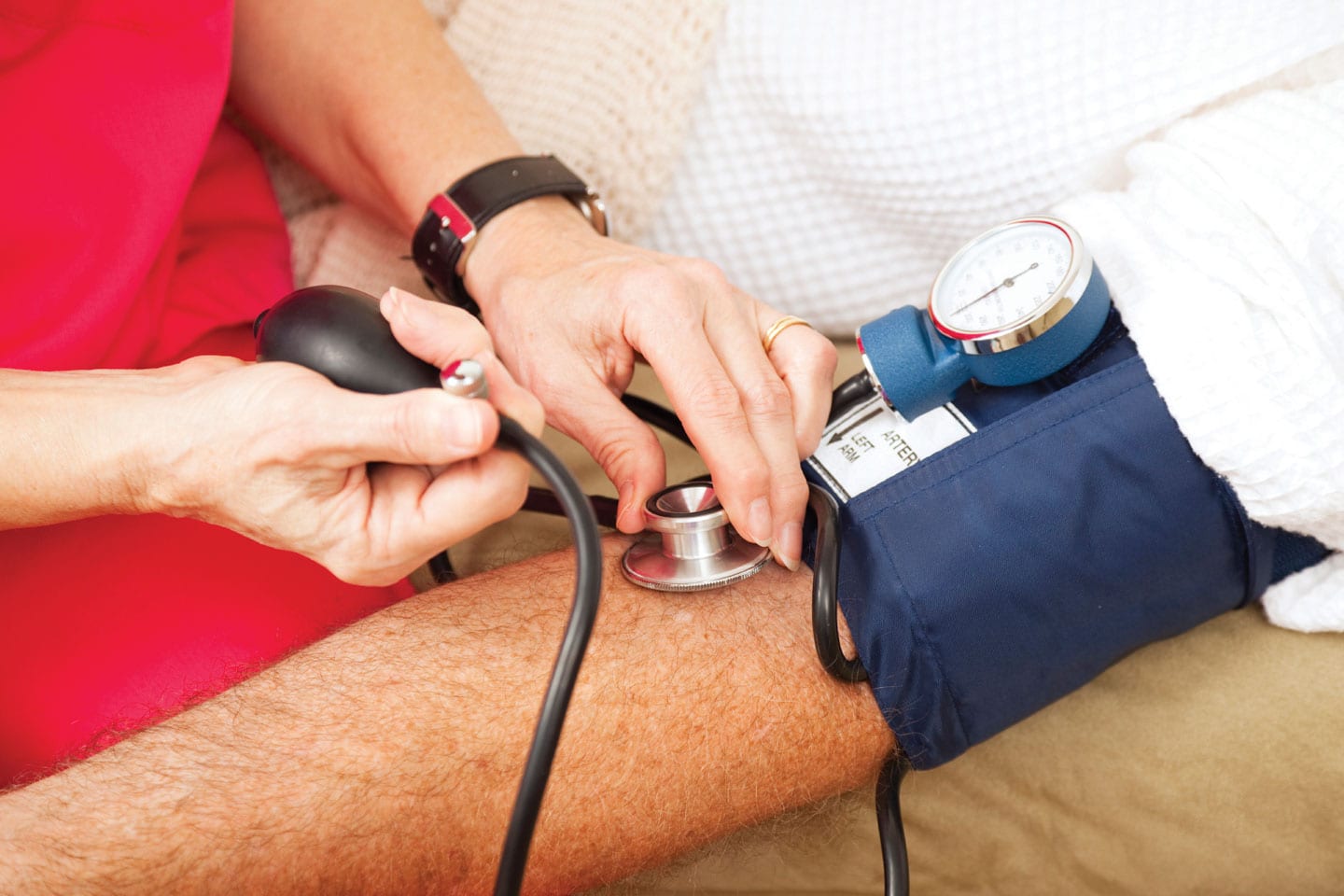When most people hear the words “drug abuse,” they think of drugs like heroin, cocaine, and marijuana. However, a growing number of people are feeding their addictions from the medicine cabinet rather than the streets. An estimated 1 in 6 Americans over the age of 12 have used prescription drugs for non-medical reasons at least once in their lifetime,
according to the National Institute on Drug Abuse.
By Katherine Ladny Mitchell
EASIER TO ACCESS, EASIER TO ABUSE
While anyone can become addicted to prescription drugs, certain circumstances make addiction more likely. Being prescribed a potentially addictive drug for a medical reason is a risk factor for any age group, as well as having easy access to these drugs from a friend or family member. Abuse of prescription painkillers (opioids), in particular, is reaching epidemic proportions in the U.S. These drugs, by nature, can lead to addiction if not monitored closely, since the way the body metabolizes can lead to tolerance and increased usage to achieve the same desired effect.
With so many people taking prescription painkillers for legitimate reasons, gaining access to these drugs has not been difficult – particularly in Tennessee. In 2001, the Tennessee Intractable Pain Treatment Act, billed as the “Pain Patient’s Bill of Rights,” was passed to provide for long-term opioid treatment for those suffering from chronic pain. The result was a greater supply of potentially addictive substances within reach. In 2010, Tennessee tied with Nevada for the second highest number of opioids sold per ten thousand people. In 2012, prescription opioids surpassed alcohol as the primary substance of abuse among people undergoing state-funded substance abuse treatments.
However, the good news is many steps have been taken in the past few years to combat prescription drug abuse in Tennessee. Just last year, the State Senate unanimously passed legislation repealing the Intractable Pain Treatment Act in an effort to curb inappropriate prescription and usage of pain medication. Though the impact of the original legislation was substantial in just 14 years – today, the likelihood of abusing prescription opioids is more than triple the national average in Tennessee – lawmakers hope the new legislation will help quell the growing problem.


UNDERSTANDING ABUSE VS. DEPENDENCE VS. ADDICTION
Just because prescription drugs can lead to an addiction doesn’t mean they will. Many people who take potentially addictive drugs don’t form an addiction, simply because they take them as prescribed and check in with a health care provider if something seems “off.” The problem arises when you begin to abuse them, meaning you use them inappropriately, whether that’s taking higher doses at closer intervals than prescribed or taking them for non-medical reasons like pleasure or relief from boredom.
Mental health professionals make a distinction between “dependence” and “addiction.” Dependence is a physical condition. It refers to how a person’s body gets used to having a substance and will need more of that substance to get the same effect.
While addiction to prescription drugs almost always begins with dependence, it is understood as a mental health issue characterized by loss of control. Addiction is compulsive indulgence in an activity – despite
continued harm to oneself and others. It is marked by changes in behavior caused by biochemical changes in
the brain, and it typically affects most, if not all, areas of a person’s life.
“The non-addict will take a prescription as prescribed and, at some point say, ‘I’m not in pain anymore or my pain is manageable with ibuprofen or acetaminophen,’ whereas the addict will compulsively begin to say, ‘I am not in pain anymore but life is so much better when I take Lortab,’” says Angela Camp, national coordinator of adolescent and emerging adult marketing with Bradford Health Services.


SPOTTING THE SIGNS
Signs and symptoms of prescription drug abuse will depend largely on the type of drug being abused. However, most people will exhibit changes in energy levels, mood and personality, sleep patterns, and eating patterns. Additionally, they may withdraw from social life and begin to isolate themselves from their family and friends. Over time, this can lead to breakdowns in communication and trust issues with loved ones.
“Often, the person with the addiction will begin to shy away from intimacy and refrain from sharing their feelings with others,” says Tony Neuhoff, certified addiction and substance abuse counselor at Parkridge Valley Adult and Senior Campus. “They may also have increasing financial problems and legal problems as the drug continues to affect their ability to function in everyday life.”
Signs of opioid abuse: Common signs of opioid abuse include sleepiness or sedation, numbness or inability to feel pain, and difficult or slowed breathing. Withdrawal signs include nausea, cravings (physical and psychological), pain, cold sweats, vomiting, diarrhea, and agitation.
Signs of stimulant abuse: Common signs of stimulant abuse include decreased appetite, trouble falling asleep, elevated blood pressure, rapid heartbeat, and feelings of anxiety, agitation, and paranoia.
Signs of anti-anxiety drug abuse: Common signs of sedative abuse include difficulty focusing, remembering, speaking clearly, walking, and staying awake, engaged, and alert.
TALKING TO YOUR LOVED ONE
If you think a loved one is suffering from prescription drug abuse, be open and honest about your concerns. Choose an appropriate time and setting; if you can, try to talk somewhere you can have a private conversation and a time when drugs are not impairing your friend’s judgment. Mornings may be better than later in the day.
Try to help him or her understand the problem and their need for assistance. As best as you can, be specific. Many times, addicts won’t fully understand how their addiction has harmed themselves or others. Discuss specific instances to help them see why you’re concerned. “A great place to start is pointing out things you’ve noticed, and asking about it in a non-punitive way,” says Neuhoff. “So for example, you might say, ‘I’ve noticed you’re tired or sleeping a great deal, do you know what’s causing that? Is there anything I can do to help?’”
Finally, set reasonable expectations for yourself and your loved one. The reality is that addicts are often the last ones to see and admit there is a problem. For most, it takes time to come to the admission that the substance has gained control of their lives. “Denial and dishonesty are two cornerstones of addiction, and these can allow the addiction to continue and prevent a person from connecting the dots between their drug use and the bad things happening in their life,” says Camp. “In any discussion you have with your loved one, especially early on, they will likely play a major part. However, you can continue to love the addict while hating the addiction and addictive behavior.”


REACHING OUT
As a close friend or family member, it can be tempting to bear the burden alone. However, this is the exact moment when it’s most important to set healthy boundaries for yourself. Family members typically suffer as much, if not more, than the addict. In order to continue speaking to your loved one with compassion, without making excuses for their behavior or contributing to the problem, it is critical to reach out to others for support. “You can’t be their therapist, 12 step sponsor, or physician, but you can be someone who says you care and who reminds them of the ways and reasons to seek help,” says Dr. Chris Harris, program director at Focus Treatment Centers.
Consider joining a support group for families and friends of addicts, seeing a therapist, or consulting an interventionist. This will offer encouragement to you as you seek to encourage your loved one to see a health care professional or visit a treatment center for a free and confidential assessment. “For many of those struggling with addiction, talking to a primary care physician or a therapist who specializes in addiction is the first step,” says Dr. Harris. “A person can also visit a treatment center for a free and confidential drug assessment, or attend a 12-step meeting to see if they relate to the people who are struggling.”
Addiction changes how a person’s brain functions, making quitting a formidable challenge. The good news is people can and do recover from addiction each day – and there are many reputable treatment programs standing by 24/7 to help anyone get out of the misery of addiction into recovery. These organizations have helped free thousands of Tennesseans from the bonds of addiction. The road to recovery is only one phone call away.


See Related Articles







